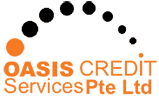Unexpected emergencies can occur at any time in life such as unexpected medical bills, house repair or car breakdown which can seriously damage your budget. This is when emergency personal loans come in handy to give people a safety net in an emergency.
In this guide, we will dig into the world of emergency personal loan, going over its characteristics, types, application procedure, and repayment plans. At the end you will get, in-depth understanding of emergency personal loans and their potential to function.
Understanding Emergency Personal Loan
Emergency personal loans provide an important lifeline for people in unexpected problems with finances, giving them rapid access to money when they most need it. However, what exactly are emergency personal loans?
Emergency Personal Loans
Designed to meet unexpected financial requirements, emergency personal loans are unsecured loans. Emergency personal loans usually depend just on the borrower’s creditworthiness, as opposed to conventional loans that could need collateral in the form of a house or automobile. This implies that people can get these loans without having to put their possessions at danger.
Features and Characteristics:
Quick Approval and Disbursement: One of the defining features of emergency personal loans is their rapid approval process. In many cases, borrowers can receive funds within a matter of days, or even hours, making them ideal for addressing pressing financial emergencies.
Flexible Loan Amounts: Emergency personal loans come in varying amounts, ranging from a few hundred to several thousand dollars, depending on the lender and the borrower’s financial situation.
Shorter Loan Terms: To mitigate the risk associated with these unsecured loans, lenders often offer shorter repayment terms for emergency personal loans. While traditional loans may have terms spanning several years, emergency personal loans typically require repayment within a few months to a couple of years.
Higher Interest Rates: Due to the expedited approval process and lack of collateral, emergency personal loans often come with higher interest rates compared to other types of loans. Borrowers should carefully consider the cost of borrowing before committing to a loan.
Accessible to Individuals with Varied Credit Histories: While a good credit score can increase the likelihood of loan approval and lower interest rates, many lenders offer emergency personal loans to individuals with less-than-perfect credit histories. This accessibility makes these loans an option for a broader range of borrowers.
When to Consider Taking Out an Emergency Personal Loan:
While emergency personal loans can provide valuable financial help in times of need, they’re not always the best solution for every situation. It’s essential to consider the following factors before deciding to take out such a loan:
Urgency of the Situation: Emergency personal loans are best suited for sudden and pressing financial needs, such as unexpected medical expenses, car repairs, or home repairs. If the need for funds is not immediate, exploring other options, such as saving or budgeting, may be more prudent.
Ability to Repay: Before applying for an emergency personal loan, borrowers should assess their ability to repay the loan within the specified timeframe. Failing to repay the loan on time can result in additional fees, damage to credit scores, and increased financial stress.
Comparison of Alternatives: It’s essential to compare emergency personal loans with alternative options, such as borrowing from friends or family, utilizing savings, or negotiating payment plans with creditors. Depending on the situation, these alternatives may offer more favorable terms or lower costs.
Explore our website for financial tips and resources to help you manage emergency personal loans.
Types of Emergency Personal Loans
During times of financial urgency, individuals may explore various options for obtaining emergency personal loans. Below are some of the most common types of emergency personal loans along with their respective pros and cons:
- Traditional Bank Loans:
- Pros:
- Lower interest rates compared to alternative lenders.
- Typically offer flexible repayment terms.
- May provide larger loan amounts for qualified borrowers.
- Cons:
- Strict eligibility criteria, including high credit score requirements.
- Lengthy application process, often requiring extensive documentation.
- Approval may take several days or even weeks, which may not be suitable for urgent situations.
- Online Lenders:
- Pros:
- Quick and convenient application process, often completed entirely online.
- Some online lenders cater to borrowers with less-than-perfect credit.
- Funding can be received within a short time frame, sometimes within the same day.
- Cons:
- Higher interest rates compared to traditional bank loans.
- May have stricter repayment terms and shorter loan durations.
- Some online lenders operate with less regulation, potentially leading to predatory lending practices.
- Payday Loans:
- Pros:
- Accessible to individuals with poor credit or no credit history.
- Minimal eligibility requirements, often requiring only proof of income and a checking account.
- Quick approval process, with funds disbursed on the same day or within 24 hours.
- Cons:
- Extremely high interest rates, often leading to a cycle of debt.
- Short repayment periods, typically requiring full repayment by the borrower’s next payday.
- Can trap borrowers in a cycle of borrowing due to the high cost of borrowing.
- Credit Union Loans:
- Pros:
- Lower interest rates compared to traditional banks and online lenders.
- More flexible eligibility criteria, with a focus on serving members’ needs rather than maximizing profits.
- Personalized service and financial counseling available to help borrowers manage their finances.
- Cons:
- Limited availability, as credit unions may have membership restrictions based on location, employer, or other factors.
- Application process may require becoming a credit union member, which can involve additional steps.
- Funding may not be as immediate as with payday loans or some online lenders.
When considering applying for an emergency personal loan, it’s essential to understand the typical eligibility requirements and the application process. Here’s what you need to know:
Eligibility Criteria:
To qualify for an emergency personal loan, lenders typically assess several factors:
Credit Score: Your credit score plays a significant role in determining your eligibility for a personal loan. Lenders often prefer borrowers with good to excellent credit scores, as it demonstrates a history of responsible borrowing and increases the likelihood of timely repayment. However, some lenders offer options for borrowers with less-than-perfect credit.
Income: Lenders will evaluate your income to ensure you have the financial capacity to repay the loan. They may require proof of stable income, such as pay stubs or bank statements, to verify your ability to make monthly payments.
Employment Status: Your employment status, including whether you’re employed full-time, part-time, or self-employed, can influence your eligibility. Lenders typically prefer borrowers with steady employment, as it indicates a stable source of income.
Debt-to-Income Ratio: Lenders assess your debt-to-income ratio, which compares your monthly debt obligations to your gross monthly income. A lower debt-to-income ratio signals that you have sufficient income to manage additional debt responsibly.
Application Process:
The application process for an emergency personal loan usually involves the following steps:
Research and Comparison: Start by researching lenders and comparing their offerings, including interest rates, fees, and loan terms. Consider both traditional banks and online lenders to find the best fit for your needs.
Prequalification: Some lenders offer prequalification, allowing you to check your eligibility and potential loan terms without impacting your credit score. This step gives you an idea of what loans you may qualify for before formally applying.
Formal Application: Once you’ve chosen a lender, you’ll need to complete a formal application. This typically involves providing personal information, such as your name, address, Social Security number, employment details, and income information.
Documentation: Be prepared to submit documentation to support your application, such as recent pay stubs, bank statements, and tax returns. The specific documents required may vary depending on the lender and your individual circumstances.
Credit Check: Lenders will conduct a credit check as part of the application process to assess your creditworthiness. This inquiry may impact your credit score slightly.
Approval and Funding: After reviewing your application and documentation, the lender will determine whether to approve your loan. If approved, funds are typically disbursed directly to your bank account. The time it takes to receive funding varies by lender but is often within a few business days.
Alternatives to Emergency Personal Loans
When faced with a financial emergency, it’s essential to explore all available options before committing to an emergency personal loan. Here are some alternatives to consider:
Emergency Savings Funds:
Building an emergency savings fund is one of the most effective ways to prepare for unexpected expenses. If you have savings set aside for emergencies, consider tapping into this fund rather than taking out a loan. Even a small amount saved regularly can provide a valuable safety net during challenging times.
Borrowing from Friends or Family:
Another option to consider is reaching out to friends or family members for financial assistance. While borrowing from loved ones may feel uncomfortable, it can often be a more flexible and affordable option compared to traditional loans. Be sure to approach this option with transparency and a clear plan for repayment to avoid straining relationships.
Negotiating Payment Plans with Creditors:
If your emergency involves outstanding debts or bills, consider reaching out to your creditors to negotiate payment plans or temporary arrangements. Many creditors are willing to work with borrowers who are experiencing financial hardship, offering options such as reduced payments, extended repayment terms, or temporary forbearance.
Use Available Credit:
If you have available credit on existing credit cards or lines of credit, consider using this as a temporary solution for covering emergency expenses. While high-interest rates may apply, it can be a convenient short-term option if you’re confident in your ability to repay the borrowed amount quickly.
In this comprehensive guide, we’ve explored the ins and outs of emergency personal loans, shedding light on a crucial financial tool for unforeseen circumstances.
We advise you to be careful and attentive while you consider your financial options. Although personal emergency loans might provide instant comfort, they have certain dangers and responsibilities. Take some time to carefully review your financial status before accepting any loan deal. Before deciding, think about looking into other options, consulting financial professionals, or using available resources.
Please get in touch if you need any additional advice or assistance. Pushing yourself and making wise decisions are the first steps on your path to financial security.

